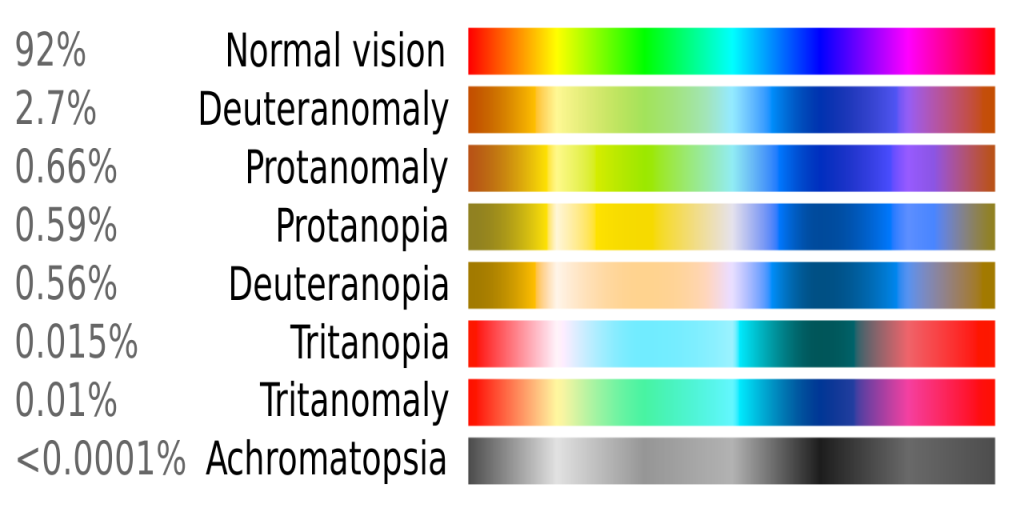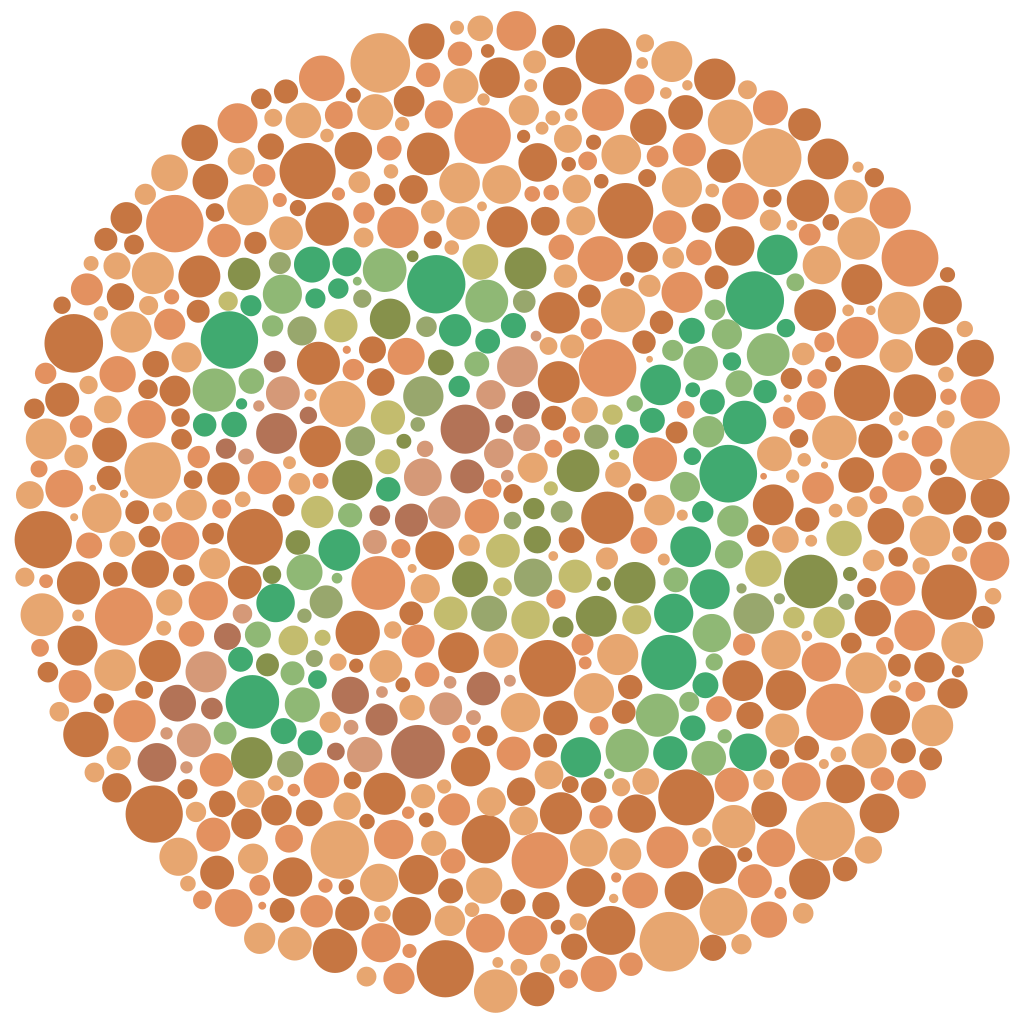Colour blindness
Colour blindness is usually a genetic condition that you are born with. It is often a hereditary condition, which means that it is passed down from your parents, but there are other ways that people can become colour blind, including through disease or injury.
Colour blindness affects colour perception – most people with colour blindness can see clearly and can see some colours, but not all colours of the visible spectrum. Some forms of colour blindness affect more males than females. For example, the gene mutation responsible for red/green colour blindness is carried on the X chromosome. Males only have one X chromosome, and females have two, which means that females are less likely to have colour blindness because even if they have the mutated gene on one X chromosome, they have another one which may not have the mutation.

Types of colour blindness
Normal colour vision is called Trichromacy (tri means three, chroma means colour) where all three types of cone cells function properly.
Anomalous trichromacy is where normal trichromatic vision doesn’t work properly (Figure 2.51). The cones might still perceive light, but they are not perceiving the right range of light wavelengths. This can also have different levels of severity. Some people with anomalous trichromacy might not have trouble seeing a full range of colours, while others will have noticeable vision differences.
Types of anomalous trichromacy
- protanomaly – reduced sensitivity to red light
- deuteranomaly – reduced sensitivity to green light
- tritanomaly – reduced sensitivity to blue light (the rarest form)
Dichromacy (di means two) is where only two types of cone cells function properly. This means that there are parts of the visible spectrum that can’t be perceived by the brain.
Types of Dichromacy:
- protanopia – unable to see red light
- deuteranopia – unable to see green light
- tritanopia – unable to see blue light (the rarest form)
A common type of colour blindness is red/green colour blindness, but it’s more complex than not being able to see red or green. The type and severity may be different for each person. Learn more about red/green and other types of colour blindness here.
Monochromacy (achromatopsia)
Monochromacy (mono means one) is where no colour can be seen at all – everything appears to be in black and white with shades of grey. This form of colour blindness is rarer than Dichromacy (Figure 2.52).

Watch this video for more information about colour blindness:
How do I know if I am colour blind?
Some people may not be aware that they have colour blindness – especially if it’s not severe. Other people may find out early or late in their lives. If you think you might be colour blind, there are websites with online tests that you can try for red/green colour blindness, but not for blue colour blindness.
You can see your doctor if you think you may have colour blindness or vision difference. Professional testing is recommended for certain professions like pilots, astronauts, truck drivers, and designers or creative people working with colour. One of the disadvantages of colour blindness, apart from not seeing a full spectrum of colours, is understanding common communication devices, like traffic lights, which are red, amber and green.
Activities – test yourself
The Ishihara 38 plate CVD test is a popular test you can try now for red/green colour blindness (Figure 2.53). It uses circles with coloured dots that display numbers or lines. If you have a red/green colour vision problem, you may find it difficult to see the numbers and lines in many of these circles.
Ishihara Plate 9 – Can you see a number in this image?

The Farnsworth-Munsell hue test is for the arrangement of colours – whether you can see the slight differences in a gradient between two colours can tell you if you have a colour deficiency.
These resources contain information and self-test activities to learn more about colour blindness.

